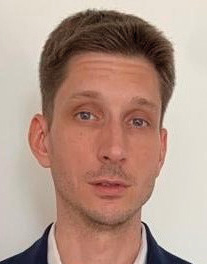
We read with great interest the paper by Xenogiannis et al regarding their initial experience with real-time coronary computed tomography angiography (coronary CTA)/fluoroscopy fusion guidance for chronic total occlusion (CTO) percutaneous coronary intervention (PCI)1. While their observations are interesting, we would like to raise some important points regarding the practical use of CTA co-registration for CTO PCI using the hybrid algorithm.
First, whereas the second most common indication (56%) for CTA/fluoroscopy fusion in the study by Xenogiannis et al was to facilitate intra-CTO wire advancement, coronary CTA cannot reliably differentiate between intraluminal and subintimal guidewire position2. Specifically, the spatial resolution of current-generation CT scanners of about 0.5 mm (not to mention motion, partial volume effect and beam hardening) does not guarantee adequate imaging of the small and moving metallic objects relative to the coronary vessel wall3. Conversely, the entirety of information proffered by guidewire tip appearance and operator tactile feedback, in conjunction with intravascular ultrasound which allows improved spatial imaging (100-200 µm), usually suffices for precise guidewire localisation during CTO PCI.
Second, although real-time fusion of CTA with X-ray fluoroscopy represents a fancy and eye-pleasing technique, it is still hampered by patient, respiratory and cardiac motion artefacts resulting in a relatively wide margin of registration errors, thus compromising the submillimetric precision required for CTO PCI2. In addition, the colour-coded lines of CTA embedded within the real-time fluoroscopic environment may potentially obscure the exact visualisation of the CTO toolkit, and thus paradoxically reduce the efficiency of CTO PCI. Hence, in our experience, the computationally less intense approach of CTA co-registration on separate monitors in the catheterisation laboratory (equally available with automatic software tools) can provide new insights into CTO visualisation without suffering from the limitations of the fusion technique.
Finally, it should be stated explicitly that the biggest advantage of CTA during CTO PCI relies on clear visualisation of the proximal cap and distal CTO segment including the extent and severity of calcifications (a phenomenon not readily obtainable from invasive angiography)2. Consequently, periprocedural display of CTA is invariably suited to clarifying proximal cap ambiguity and selecting the most optimal re-entry site, both of which might have far-reaching implications for improving the efficiency and success rate of antegrade and dissection re-entry (ADR) with a potential for reducing the need for the retrograde approach. This was indeed reflected in the study by Xenogiannis et al, in which ADR was the most common successful crossing strategy (37%) in the CTA/fluoroscopy fusion group1. While this finding might be equally well explained by the relatively high number of prior CTO PCI attempts (37%), the information on the success rate of ADR under CTA guidance (and its comparison to prior data on angiography-guided ADR) would be highly appreciated.
The study by Xenogiannis et al is a stimulating but hypothesis-generating report. The wider application of coronary CTA for CTO PCI is highly dependent on its successful implementation into the hybrid algorithm, in which two features, namely the proximal cap and distal target, should play a major role.
Conflict of interest statement
P. Knaapen has received research grants from HeartFlow. M.P. Opolski has no conflicts of interest to declare.
Supplementary data
To read the full content of this article, please download the PDF.

